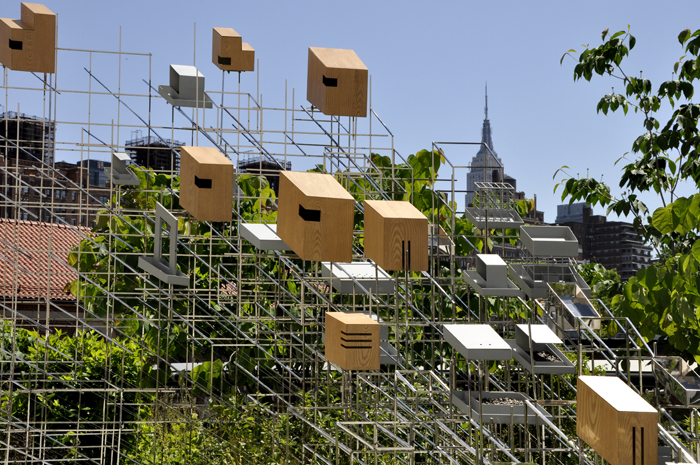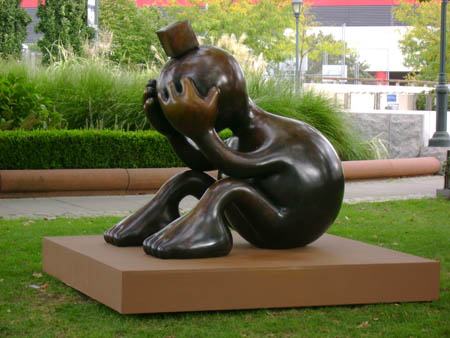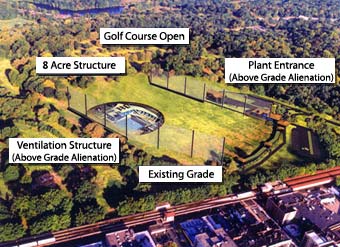 |
Compost at the Lower East Side Ecology Center
booth at the Union Square Greenmarket. |
New Yorkers generate about 14 million tons of waste each
year—but who is
really the one taking out the trash?
The city agency known as the Department of Sanitation (DSNY)
is responsible for collection refuse, which are the contents of trash bags and
cans. For recycling, the DSNY currently collects paper such as newsprint,
cardboard, but not napkins, tissues, and paper plates/cups. According to the DSNY website, approximately half the paper collected goes to five local paper processors in the metropolitan area.
After being picked up by Department of Sanitation trucks, all of the plastics, cartons, and metal collected travels by barge or rail to the Sims Metal Management Municipal Recycling in Queens, the Bronx, or Jersey City. Sims Metal Management is also building a new recycling facility at the South Brooklyn Marine Terminal in Sunset Park. Construction broke ground in the summer of 2010, and the facility is scheduled to begin operating sometime between December 2012 and June 2013.
 |
Model for the new Sims Metal recycling facility being build at Sunset Park
(photo credit: Sims Metal Management) |
However, recycling bins are not always in sight when one is on the go. According to the New York Times article by Mireya Navarro, there are only 500 curbside recycling bins in New York City. The City Council hopes to double the number of recycling bins by 2020.
While the Department of Sanitation collects food scraps from
some restaurants and businesses, the DSNY does not collect residential compost.
According to the NYC Bureau of Waste Prevention, Reuse and Recycling website, “Although
the potential for composting is considerable, currently only yard trimmings and
Christmas trees can be cost-effectively collected and composted in NYC on a
citywide scale.” However, there are locations in each borough that are part of
the NYC Compost Project, where residents can compost their food scraps on
certain days of the week.
 |
Helen Chang, a parent volunteer from the
Grace Church School, composting at the Lower
East Side Ecology Center booth. |
At the Union Square Greenmarket in Manhattan, people can be
seen carrying bags of food scraps to dump into the large gray buckets provided
by the Lower East Side Ecology Center. Aurelia Kaelin is the supervisor at the
compost collection booth; she also gives advice about how to keep worm buckets
at home. “The city always says that there is no space, no room [to compost],”
said Kaelin. She usually collects about 8 buckets of compost on Mondays, 12
buckets on Wednesdays and Fridays, and 15-20 buckets on Saturdays.
Helen Chang, a parent volunteer from the Grace Church
School, came to the Union Square composting site with a cart full of food
scraps to compost. “The school does compost through the City, but they just
couldn’t keep up with the amount of food waste being generated,” said Chang.
About six months ago, she and nine other parents formed a volunteer group to
bring the excess food scraps to the Greenmarket on Mondays and Wednesdays.
In 2007, Mayor Bloomberg initiated PlaNYC to make a greener
New York by setting a goal to divert 75% of the city’s solid waste from
landfills. When asked if she foresees the City composting on a large scale
anytime soon, Kaelin responded, “They’ll have to come up with something sooner
or later, there is just too much waste.”



















































